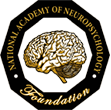Dementia with Lewy Bodies (DLB) is a form of dementia associated with the presence of Lewy Bodies in the brain along with a characteristic set of symptoms and disease progression. As is the case for any form of dementia, DLB is a progressive illness affecting an individual’s ability to live and function independently. Lewy Bodies are not exclusively found in the brains of individuals with DLB but have also been found in individuals with Parkinson’s disease and Alzheimer’s disease. The extent and location of Lewy bodies tends to differ among these illnesses. The diagnosis cannot be confirmed definitively without a post-mortem autopsy but it can be made clinically based on an individual’s symptoms.
Signs and Symptoms1
Central Feature: Presence of progressive cognitive decline that interferes with normal functioning
Core Features: Fluctuating cognition (variations in attention and alertness); visual hallucinations; and/or Parkinsonism
Suggestive Features: REM sleep behavior disorder; neuroleptic sensitivity; and/or low dopamine uptake in the basal ganglia on SPECT or PET imaging
Supportive Features (although these symptoms may be present in DLB, it is unclear if they provide any diagnostic specificity): Repeated falls and syncope; transient, unexplained loss of consciousness; severe autonomic dysfunction (such as orthostatic hypotension or urinary incontinence); hallucinations in modalities other than visual; delusions; depression; relative preservation of medial temporal lobe structures on CT/MRI scan; generalized low uptake on SPECT/PET perfusion scan with reduced occipital activity; abnormal (low uptake) MIBG myocardial scintigraphy; and/or prominent slow wave activity on EEG with temporal lobe transient sharp waves
Progression: A diagnosis of DLB is suggested when symptoms of dementia occur before or at the same time as symptoms of Parkinsonism. If motor symptoms are present prior to the onset of dementia a different diagnosis, such as Parkinson’s disease dementia, is suggested.
Cognition in DLB1,3
DLB has been found to be associated primarily with impairments in attention, executive functioning, and visuospatial skills. Impairments in memory may not be present initially but may develop as the disease progresses.
Treatment1,2
There is no cure for DLB. As with any dementia diagnosis, treatment primarily entails management of symptoms and increased oversight by others to ensure safety. Medications commonly used to treat various symptoms that are seen in DLB may have little or even adverse effects in patients with DLB, such as a worsening of some symptoms. For example, some medications commonly used to treat the motor symptoms in Parkinson’s disease can worsen cognitive functioning or worsen hallucinations. Also, some antipsychotic medications used to treat hallucinations or behavior symptoms may worsen these symptoms in DLB.
Resources
References
- McKeith IG, Dickson DW, Lowe J, Emre M, O'Brien JT, et al. (2005). Diagnosis and management of dementia with Lewy bodies: third report of the DLB Consortium. Neurology, 65 (12), 1863-1872.
- National Institutes of Health. (2013). Lewy Body Dementia: Information for Patients, Families, and Professionals.
- Troster, A. (2008). Neuropsychological Characteristics of Dementia with Lewy Bodies and Parkinson’s Disease with Dementia: Differentiation, Early Detection, and Implications for “Mild Cognitive Impairment” and Biomarkers. Neuropsychology Review, 18, 103-119.


